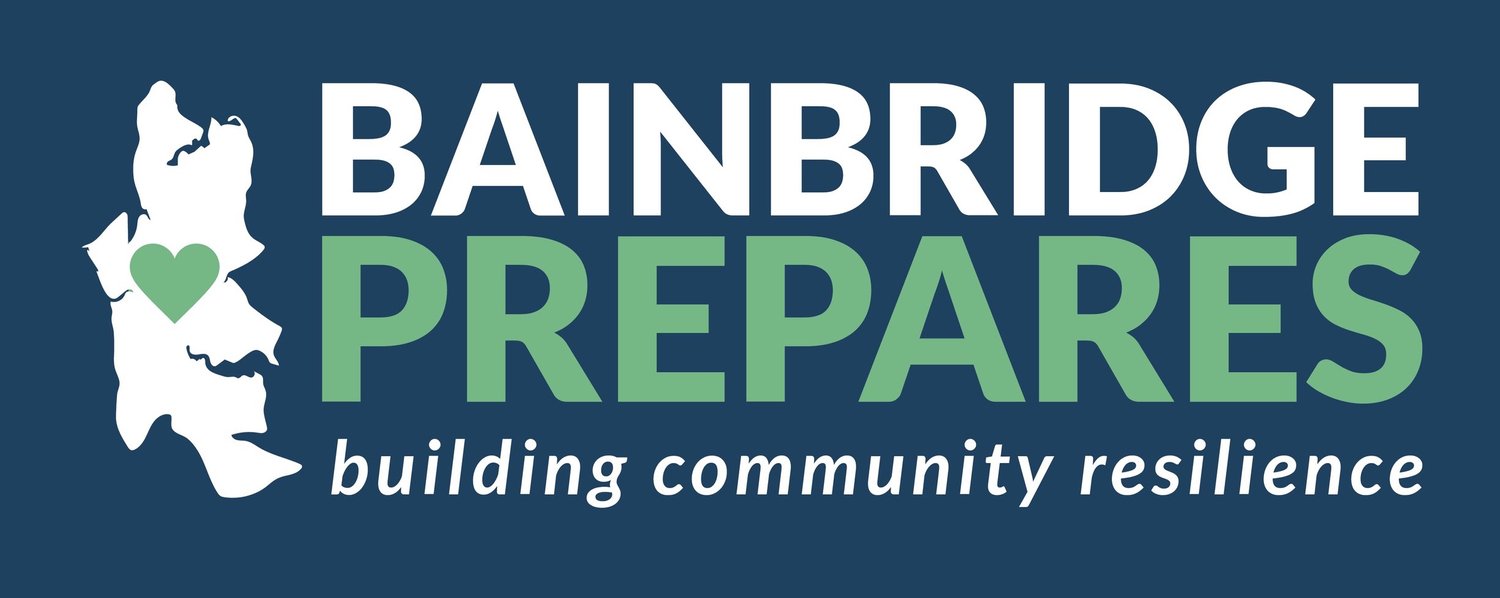Make a Communications Plan
The Washington State Military Department (WSMD) has created a simple one-year guide—Prepare in a Year—to help people tackle one task per month. We will follow it here to help you prepare in one category every thirty days so that you will make progress monthly and feel ready by the end of the year. If you are preparing your family, make sure your family members know what to do as well. If you are preparing your business, make sure your colleagues or employees are up to date.
The thing to remember about communications is that, when a disaster strikes, the normal modes of staying connected get disrupted. Cell phone service goes down. The Internet goes down. Phone lines go down. But there are other ways to communicate if you and your family or you and your colleagues establish protocols in advance.
Before the end of January, take the following steps:
Sign up for local emergency alerts. On Bainbridge, you need to include Nixle: Text 98110 to 888777. Also include FEMA (text ANDROID to 43362 or text APPLE to 43362) and WDMA. Make sure everyone in your family or all your colleagues do the same.
Download and configure emergency alert apps like PulsePoint and American Red Cross Emergency. Make sure everyone in your family (or all your colleagues) do the same.
Most disasters are localized, meaning that communications systems out of the area will not be affected. For this reason, ask an out-of-area (more than 100 miles away) friend/relative to be your contact person. This way, everyone in your household or on your team separated from one another can first reach out to that person, who can help share news and coordinate reunification.
Write down the contact information for key people and make sure everyone has it with them at all times. During a disaster, stress may affect your ability to remember. Use the printable form at the bottom of the page.
Get a battery powered and/or solar powered or hand-crank emergency radio, so you can monitor for messages from the Emergency Alert System and Wireless Emergency Alerts.
Text will still often work when calls do not. After a disaster, you can try to text short messages to share your status and location. Make sure everyone in your family or at your workplace understands this. You can even text 911 in some places to get help.
The Internet may work even when cell phones do not. Let people know you are safe and where you are by using Facebook, Instagram, or the American Red Cross Safe and Well website.
Get copies of the emergency plans from work and from school and keep them in an easy to access place.
Choose a place to meet up if you are separated. Imagine your kids are at school, your spouse is at work, and you are at the grocery store when a disaster strikes. How will you all be reconnected? Where will you go to check in with one another if other modes of communication fail and if you are unable to get home early because of downed trees, wires, and disrupted transportation? If you're on Bainbridge, the Child Safety & Reunification Team has a plan for bringing families together again. Ask your school what the plan is.
Congrats! You have now taken the first step toward readiness. Tune in next month for Step 2: Make an Action Plan.

